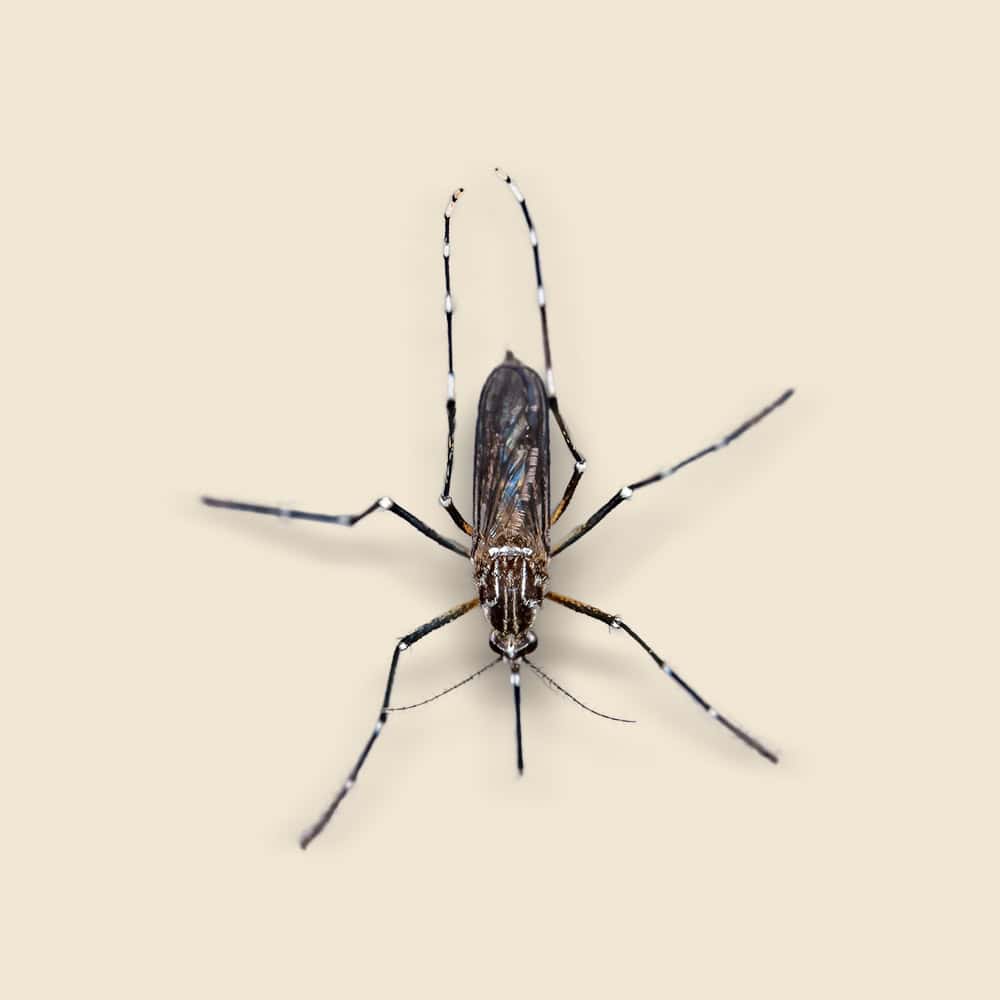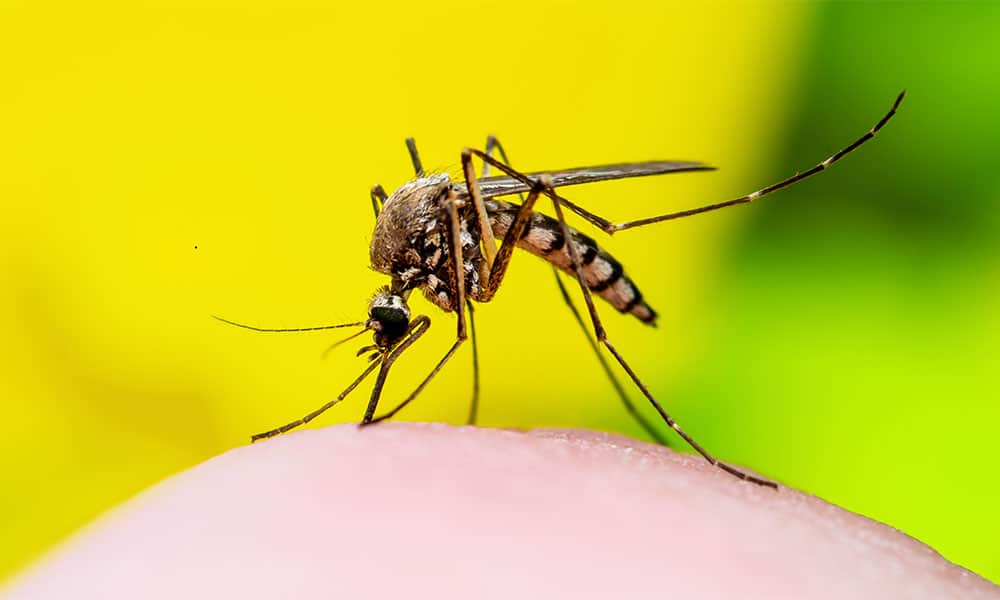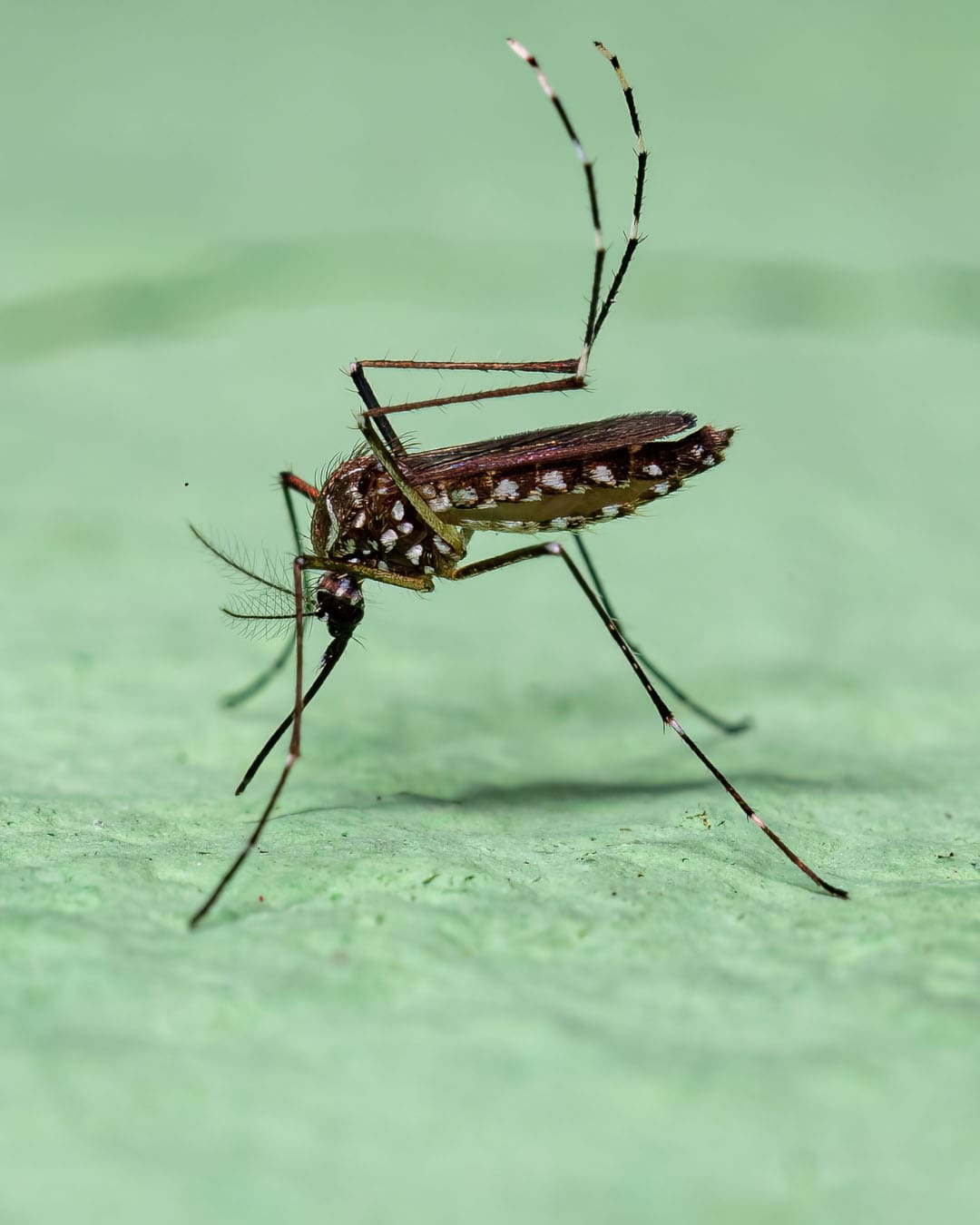Yellow Fever Mosquito Facts & Information
Yellow fever mosquitoes, known for their distinct white markings and aggressive daytime biting, can pose serious health risks by transmitting diseases such as yellow fever, dengue, chikungunya, and Zika virus. Controlling these pests is essential for protecting public health and maintaining comfortable living environments.

Aedes aegypti
What You Need To Know About Yellow Fever Mosquitoes
What do yellow fever mosquitoes look like?
Yellow fever mosquitoes, also known as Aedes aegypti, are small, dark-colored mosquitoes with white markings on their legs and a distinctive lyre-shaped pattern of silvery-white scales on the upper surface of their thorax. They typically measure about 1/4 inch in length.
What do yellow fever mosquitoes eat?
Adult female yellow fever mosquitoes feed on the blood of humans and animals, which they need for egg production. Both males and females also feed on nectar and other plant sugars for energy.
What sort of habitat do yellow fever mosquitoes live in?
Yellow fever mosquitoes are commonly found in urban and suburban areas, especially in tropical and subtropical regions. They breed in standing water, such as in containers, flowerpots, discarded tires, and other man-made objects that can hold water.
How do yellow fever mosquitoes commonly behave?
Yellow fever mosquitoes are aggressive daytime biters, with peak activity periods in the early morning and late afternoon. They prefer to bite humans and often live close to human dwellings. They are known vectors for transmitting diseases such as yellow fever, dengue fever, Zika virus, and chikungunya.
Did you know this about yellow fever mosquitoes?
Yellow fever mosquitoes have a long history as vectors of serious diseases, making them a significant public health concern. They are highly adaptable and can thrive in urban environments where they breed in small, artificial water containers. Interestingly, only the female mosquitoes bite, as they need the protein from blood to develop their eggs.
Understanding Yellow Fever Mosquito Infestations
Understanding yellow fever mosquito infestations is crucial for effective management. These mosquitoes breed in standing water and can thrive in both urban and rural settings. They are most active during the day, particularly in the early morning and late afternoon. Yellow fever mosquitoes are capable of breeding in small amounts of water, making them particularly challenging to control.

How Hearts Handles Yellow Fever Mosquito Treatment
Hearts Pest Management employs an integrated pest management approach to handle yellow fever mosquito infestations. Our process begins with a thorough inspection to identify breeding sites, assess mosquito activity, and determine the best course of action. We then develop a customized treatment plan that may include environmental management, biological controls, and targeted insecticide applications, ensuring the safety and comfort of your property.
Yellow Fever Mosquito Inspection
Yellow Fever Mosquito Treatment
Yellow Fever Mosquito Prevention
Educational Resources

Think You Might Have a Yellow Fever Mosquito Infestation?
At Hearts Pest Control, we understand the challenges associated with Yellow Fever Mosquito infestations and are here to provide professional solutions tailored to your needs. Flourishing in warm and humid climates, they are prevalent in many regions, including San Diego County, Orange County, and Los Angeles County.